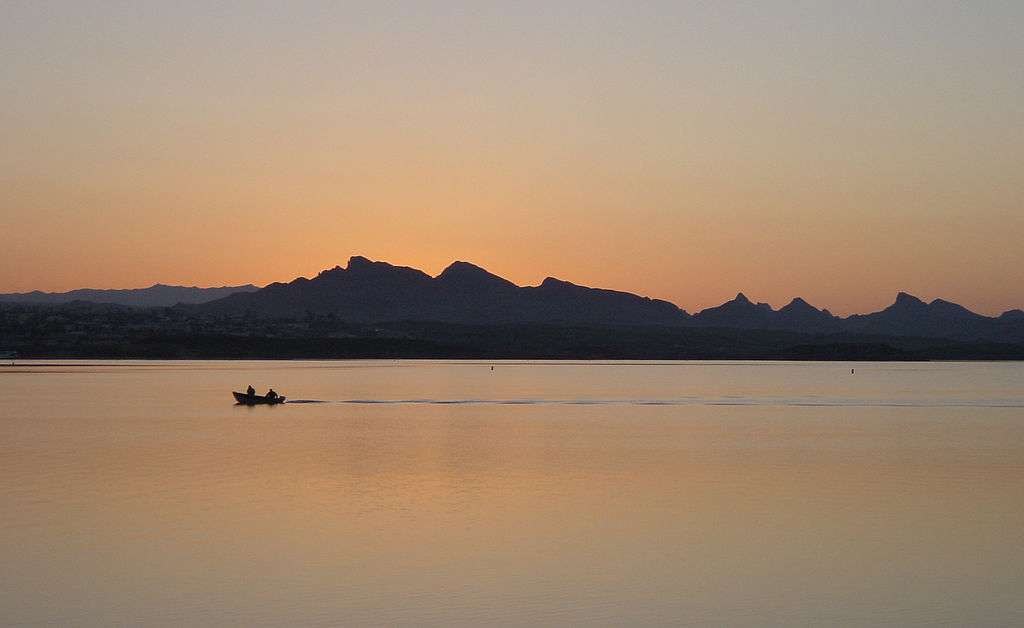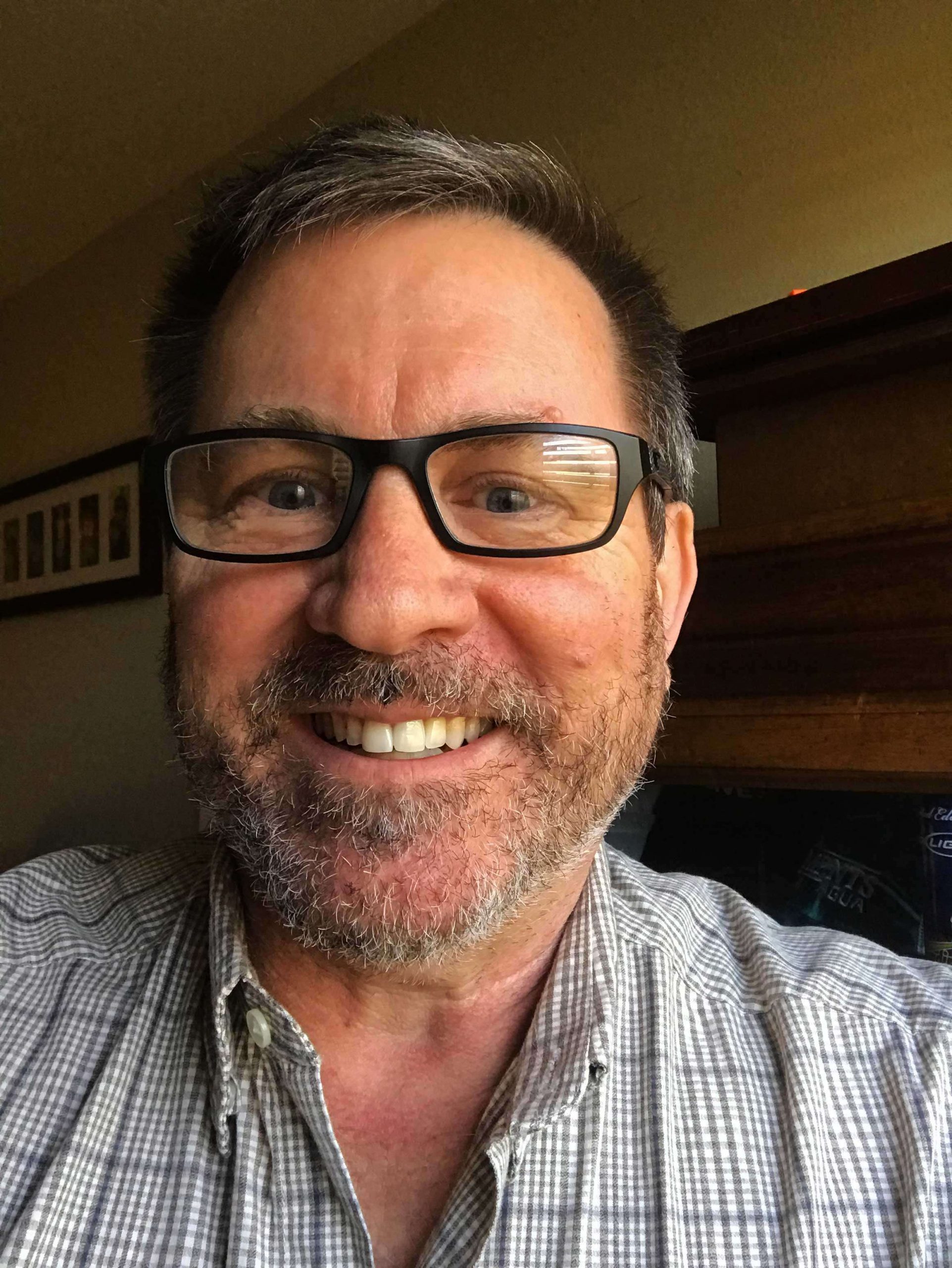
Lake Havasu has gone from a have-not to have a lot. The Colorado River impoundment on the Arizona-California border was considered a dead fishery before a huge habitat project turned it around.
It has recovered so well that it’s been on Bassmaster’s Top 100 Bass Lakes for several years running, ranking 20th in 2014. It certainly wouldn’t have made the list 17 years ago when Bassmaster Elite angler Dean Rojas moved to Lake Havasu City.
(See the photo gallery of Lake Havasu here.)
“No. It wasn’t even close,” Rojas said. “Back then, it would take 10 or 11 pounds to win a team tournament. Now it’s well over 20 pounds every time. There are a lot of variables that have happened over the years that have helped the lake become what it is today.”
The 19,000-acre desert lake was revived by the largest fish habitat restoration project in America, aided greatly by local group Anglers United. The pro anglers in the Bassmaster Elite at Lake Havasu presented by Dick Cepek Tires & Wheels most certainly will display the fruits of those labors when they visit May 7th-10th.
“The lake used to be very nonfertile, sterile and clear,” Rojas said. “Just not a whole lot of anything in the water.
“It’s pretty safe to say that the foundation has been placed by Anglers United with their habitat program. That’s the nucleus of everything that’s happening with the lake.”
Endangered impetus
Gene Gilliland, B.A.S.S. Conservation Director, toured the lake several years ago and received a detailed explanation of the Lake Havasu Fisheries Improvement Program. While it ending up benefiting the bass and other sportfish populations, the program was originally conceived for two endangered non-sport fish, the razorback sucker and bonytail chub.
Those species began to suffer when Parker Dam formed Lake Havasu in 1938, turning the river that carved the Grand Canyon and sent tons of sediment and nutrients downstream into a more sterile environment.
“When the dams were built, Lake Powell to Lake Mead to Mojave, to Havasu, it basically changed the whole nature of the Colorado River,” Gilliland said. “That resulted in those species declining to the point that they were listed as endangered.”
To help recover those fish, a government plan to place artificial habitat in Lake Havasu began in 1993. The U.S. Bureau of Land Management, along with six other federal and state agencies, poured around $16 million over the next 10 years.
“Locally, a group called Anglers United was instrumental in aiding with boots on the ground,” Gilliland said. “They got very involved in raising money on their own to supplement what was coming in from federal money. They all spent a tremendous amount of money, millions of dollars, installing habitat.”
To date, Anglers United reports more than $32 million has been spent on the project, which includes fishing docks, parking and amenities, foot trails and access for the physically challenged. But it all started with building the fish population.
Thousands of structures were strategically sunk from a specially designed pontoon boat donated by Shimano. Made from material like PVC pipe, plastic fencing, concrete sewer pipe and cinder blocks, the “bass bungalows,” “crappie condos” and “catfish houses” were placed in 42 coves by Anglers United volunteers. Their 210,000 man hours created 875 acres of habitat, giving fish places to hide and spawn.
“They are no trees in the desert, so they had to get real creative with artificial materials that basically created fish attractors,” Gilliland said. “Plankton and terraphytes began to grow, then quagga mussels colonized them. You get a food chain built up that attracts little fish all the way to the predators.”
David Bohl Sr., president of Anglers United, said an important phase was his group placing tons of brush around the artificial structures. When the organic material decomposes, mosses and algae grow on the artificial reefs, and insects colonize that biological skin, both of which are a food source.
“In the late 1980s, fishing almost disappeared due to the lack of woody aquatic habitat in the lake,” Bohl said. “As the brush program operated throughout the year, the acres of woody habitat continued to increase. It provided excellent cover for the fry to survive and increased the number of sport fish. Fishing for largemouth bass and other sport fish slowly began to improve.”
With collections of Christmas trees to clippings from landscapers, plantlife is submerged “Monday through Thursday” all year long, Bohl said.
Landing in tall grass
Another factor was the resurgence of native grasses in Lake Havasu. Gilliland was surprised when he visited and saw aquatic vegetation growing in about 20 percent of the lake.
“That is kind of wild card in this,” he said. “I was thinking this was going to be a big barren, desert bowl with plastic structures. But every time we got into shallow water that was less than 10 feet deep, there were weeds.”
From a fish biology standpoint, he said that vegetation had to play a major part in the resurrection. He mentioned several other reservoirs that experienced a similar down cycle in fishing after the loss of vegetation, like Sam Rayburn 20 years ago.
“Then the weeds came in, and bang, the lake is back. It’s as good or better than ever,” he said. “I think that may have been part of the cycle at Havasu. They can take a long time to establish, but I’m sure that they add to the whole habitat.”
Rojas said vegetation provides another nursery to most all living organisms and helps fish escape predators and grow. It’s not only helped create healthy populations of fish, it’s added more places to catch them.
“There are a lot of options now besides the habitat that Anglers United placed there,” he said. “We have grass that’s growing throughout the lake. We have milfoil down in the Bill Williams River. In the summertime, it thrives.
“Havasu has a lush river that feeds it, there’s a lot of backwater, a lot of estuary, a lot of places where stuff can grow. We have a lot of waterfowl that comes through every year, and for them to even transport some grass or seeds, I’m sure that has helped some also.”
Forage around
The structures and grass has meant more cover and food for the all the fish, Rojas said, and added items on the menu has meant bigger fish.
“It starts with the crawfish, and we’ve had tilapia that we’ve never had before, and, more importantly, threadfin shad,” he said. “There’s an incredible amount of food base that they’ve never had before in the last five years.”
While the endangered fish have experienced recovery, the fishery’s overall health has been a boon to sport fishing. Catches in recent years attest to that.
The world record redear sunfish weighing 5.55 pounds was caught from Havasu in 2011, and a 5.8-pounder caught in February is awaiting confirmation to supplant it as the IGFA world record.
Smallmouth bass have taken a foothold in the lake as well. Late in 2011, a 5.63-pound smallmouth caught in Havasu set the Arizona state record for the Colorado River.
“Along with the increase of quality and quantity of largemouth bass, smallmouth bass appeared on the scene,” Bohl said. “A good friend of mine was the game warden in the district for 15 years before and during the beginning of the program. He told me that in all that time he only saw one smallmouth bass caught out of the lake. Today they account for approximately 40 percent of a bass fishing limit.
“So, the fishery has turned around completely. At the beginning of the 2000s, a one-day tournament bag limit of 15 pounds would be a great exception. Now, it takes a 25- to 30-pound, five-fish limit to win.”
With tournaments almost every weekend on Havasu, the hefty bags speak for themselves. Anglers United conducted a survey when the project was almost completed, and it showed significant increases in angler visits and catch rates. More bass tournaments with greater participation also pointed to success – nobody will fish where they can’t catch any.
Bohl said Anglers United is in the middle of another angler survey, hoping to see from catch rates if they need to amend their habitat plan. “If the (fish) population declined, it would be a huge economic impact on the community,” he said.
Hosting the Elite event should present a nice windfall for the region, as well as great publicity. Daily bags are expected to rival the total three-day winning weight of the last B.A.S.S. event there. Jack Gadlage won the 2003 Western Open with a total of 22-10.
“It’s going to be good,” said Rojas, adding that the scenery is as breathtaking as the fishing. “It’s by far the prettiest lake that we’ll go to this year, hands down. Everybody, the anglers, the photographers, with still shots to video, will get their fill.”

